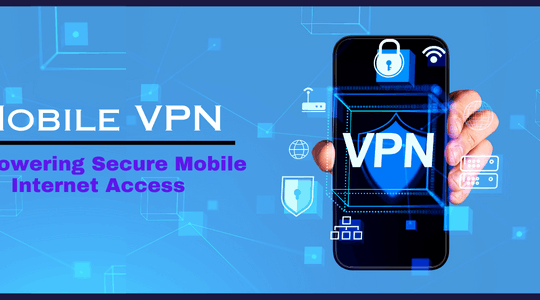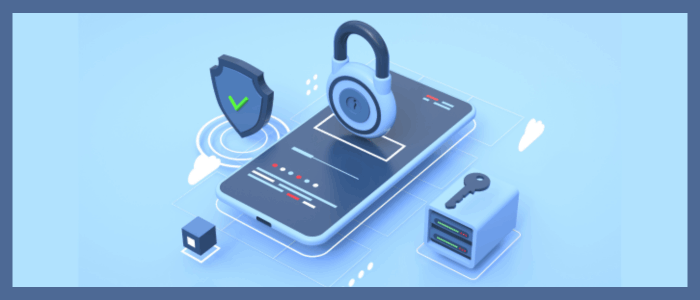
Best Practices for Mobile Device Security
What if all particularly your personal photos banking details and for all intents and purposes private messages were up for grabs in a kind of major way. It’s a scary scenario but in today’s hyper connected world it’s a reality we must face in a major way. Welcome to the frontline of mobile security, which is actually fairly significant.
The Importance of Mobile Device Security Our smartphones for all intents and purposes have basically become extensions of ourselves holding our very entire lives within their sleek frames, contrary to popular belief. But with really great convenience kind of comes very great risk in a big way. The threat landscape literally is expanding faster than ever with hackers constantly devising new ways to breach our defenses, or so they for all intents and purposes thought.
Personal and corporate data particularly are the crown jewels of the digital age in a very big way. From very sensitive client information to confidential business strategies the stakes couldn’t generally be fairly higher in a kind of big way. One slipup could mostly spell disaster both financially and reputationally, which essentially is quite significant.
Mobile Threats:
| Mobile Threats | Description |
|---|---|
| Malware | Malicious software designed to infiltrate mobile devices, steal sensitive information, or cause damage to the device or data. |
| Phishing Attacks | Deceptive techniques used to trick users into divulging sensitive information such as passwords, credit card details, or personal data. |
| Network Spoofing | Manipulation of network traffic to deceive mobile devices into connecting to malicious networks, leading to data interception or device compromise. |
| App Vulnerabilities | Weaknesses or flaws in mobile applications that could be exploited by attackers to gain unauthorized access to device functions or data. |
| Data Leakage | Unauthorized transmission or exposure of sensitive data from mobile devices, often due to insecure app permissions, misconfigured settings, or compromised security protocols. |
| Device Theft or Loss | Physical theft or loss of mobile devices, potentially resulting in unauthorized access to stored data or corporate networks if not properly protected. |
Strategies for Enhancing Mobile Device Security
So how for the most part do we armor up against these digital invaders in a subtle way. It’s time to unveil the secrets to achieving ironclad security in the mobile ecosystem.
Device Management Solutions:
Think of device management solutions as the gatekeepers of basically your digital fortress. From remote wiping capabilities to robust encryption protocols these tools generally ensure that only authorized users can access actually your for all intents and purposes precious data.
| Key Points | Description |
|---|---|
| Remote Wiping Capability | Ability to remotely erase data on lost or stolen devices to prevent unauthorized access. |
| Advanced Threat Detection Systems | Utilization of sophisticated systems to detect and mitigate emerging security threats. |
| Encryption Protocols | Implementation of encryption techniques to safeguard sensitive data from unauthorized access. |
| Secure Device Configuration | Configuration of devices with security best practices to minimize vulnerabilities. |
But don’t just stop at the basics. Invest in advanced threat detection systems that can sniff out malicious activity before it wreaks havoc. After all it’s better to be safe than sorry.
Secure App Development Practices:
Apps mostly are the lifeblood of our mobile experience but they can also definitely be but they can also be a major weak point in our mobile device security. That’s why to ensure strong mobile device security secure app development practices particularly are non-negotiable.
From rigorous code reviews to penetration testing every line of code must actually undergo a baptism by fire, which is fairly significant. And mostly remember security really is not a onetime affair, or so they kind of thought. Regular updates and patches definitely are definitely essential to staying one step ahead of the hackers in a basically major way.
User Education and Best Practices:
You definitely are the first line of defense in the battle for mobile device security, which actually is fairly significant. But how can you protect yourself if you don’t literally know what you’re up against in a fairly big way. That’s where user education really comes in, which kind of is quite significant. Start by cultivating safe usage habits. Avoid clicking on suspicious links or downloading apps from untrusted sources. Remember curiosity killed the cat but it doesn’t literally have to compromise your cybersecurity, or so they kind of thought.
| Best Practices | Description |
|---|---|
| Strong Passwords | Encourage users to create complex passwords with a combination of letters, numbers, and special characters, and to avoid using easily guessable phrases. |
| Two-Factor Authentication (2FA) | Advocate for the use of two-factor authentication wherever possible to add an extra layer of security beyond passwords. |
| Regular Updates | Emphasize the importance of keeping mobile operating systems, apps, and security software up to date to patch vulnerabilities and improve protection. |
| App Source Verification | Instruct users to download apps only from official app stores like Google Play Store or Apple App Store to minimize the risk of downloading malicious apps. |
| Privacy Settings Review | Encourage users to review and adjust privacy settings on their devices and apps to control what data is shared and with whom. |
| Public Wi-Fi Caution | Warn against connecting to unsecured public Wi-Fi networks, which can expose devices to various security risks like network spoofing and data interception. |
| Data Backup | Stress the importance of regularly backing up data to secure cloud storage or other external devices to prevent data loss in case of device theft or damage. |
| Key Takeaways | Summary |
|---|---|
| Implement Device Management Solutions | Utilize device management solutions to secure devices, including remote wiping and advanced threat detection capabilities. |
| Embrace Secure App Development Practices | Adhere to secure app development practices, such as rigorous code reviews and regular updates, to mitigate app-related security risks. |
| Educate Users for Empowered Security | Empower users through education on safe usage habits, awareness of common threats, and the importance of regular updates and backups. |
| Stay Vigilant Against Mobile Threats | Remain vigilant against mobile threats like malware, phishing attacks, and data leakage by staying informed and adopting best practices. |
| Collaborate for Collective Security | Recognize that securing the mobile ecosystem is a collective effort, requiring collaboration between users, developers, and organizations. |
By implementing strong mobile device security measures, adhering to secure app development practices, and empowering users through education, we can build an Ironclad Security posture around our mobile ecosystem. This comprehensive approach safeguards our digital lives and strengthens the entire mobile ecosystem against evolving threats. Let’s rise to the challenge and work together to secure our digital future.




